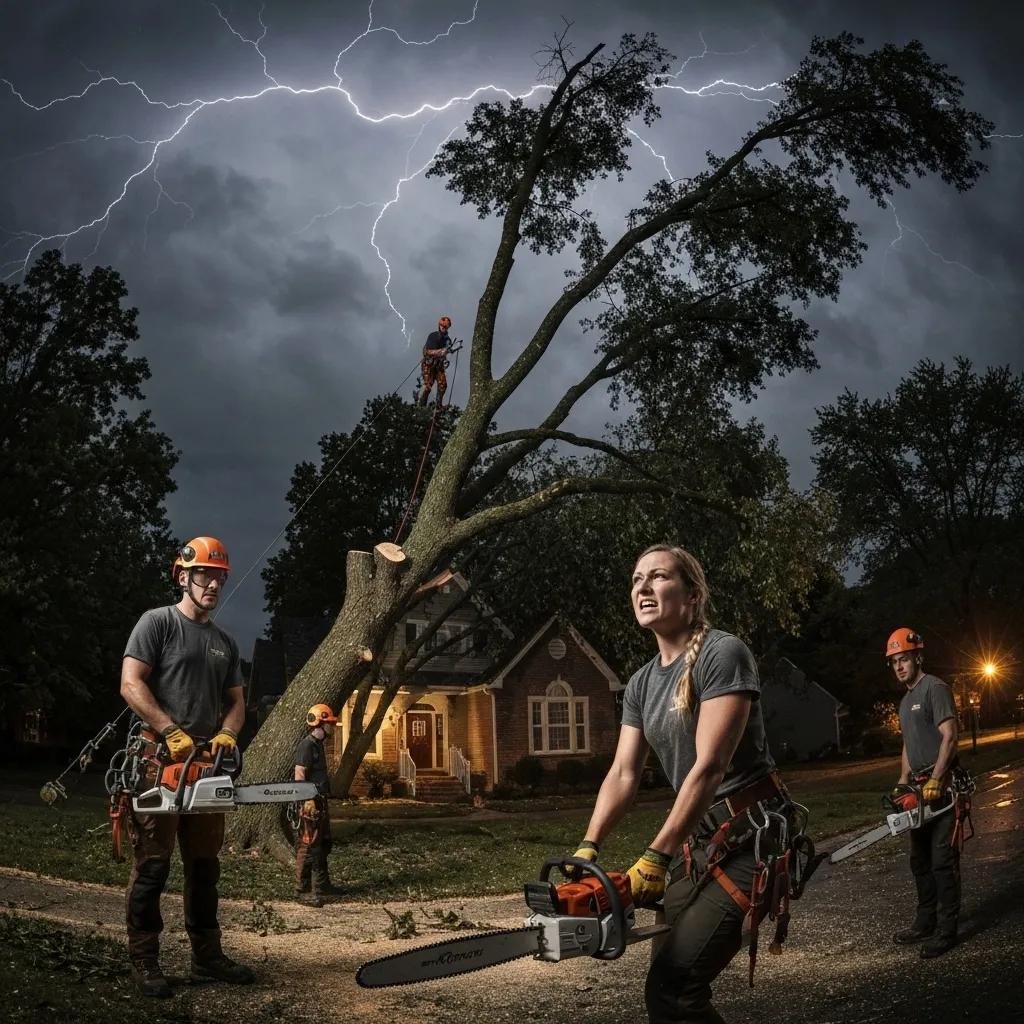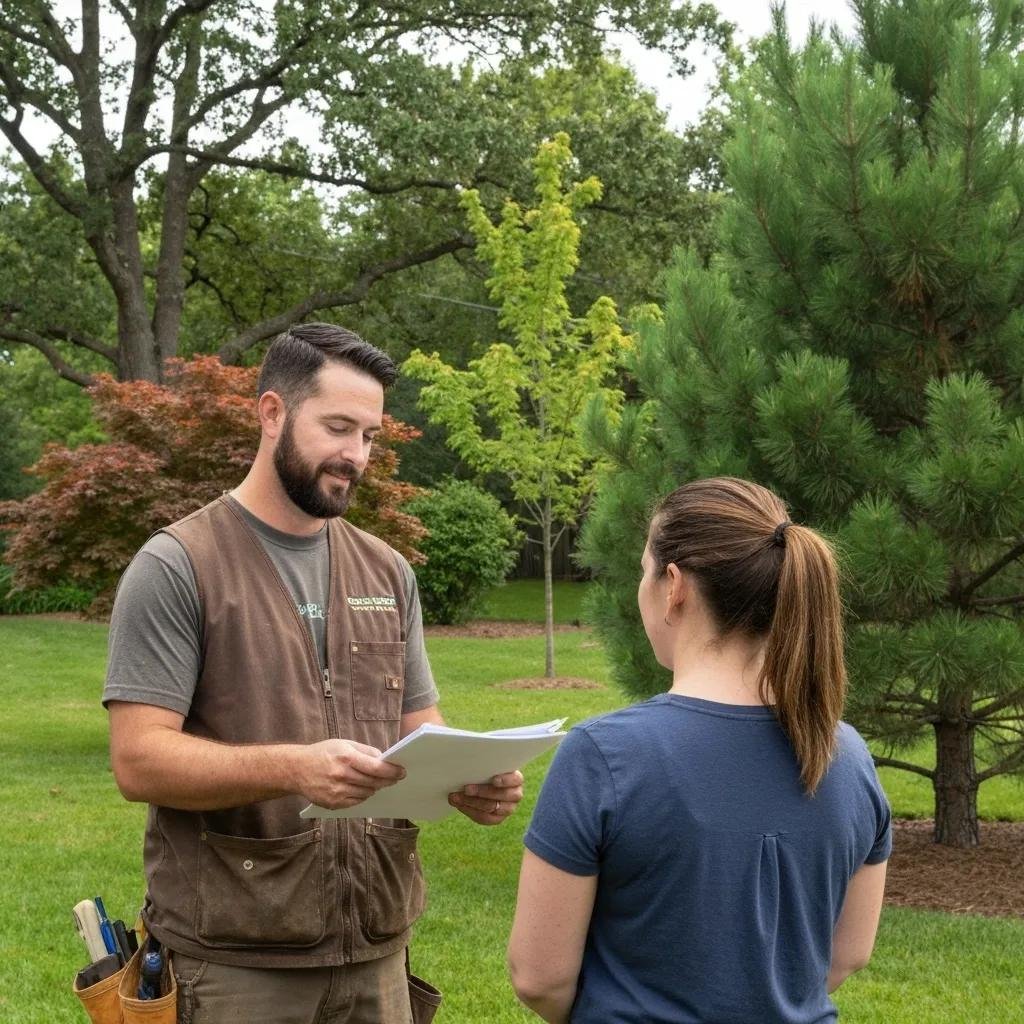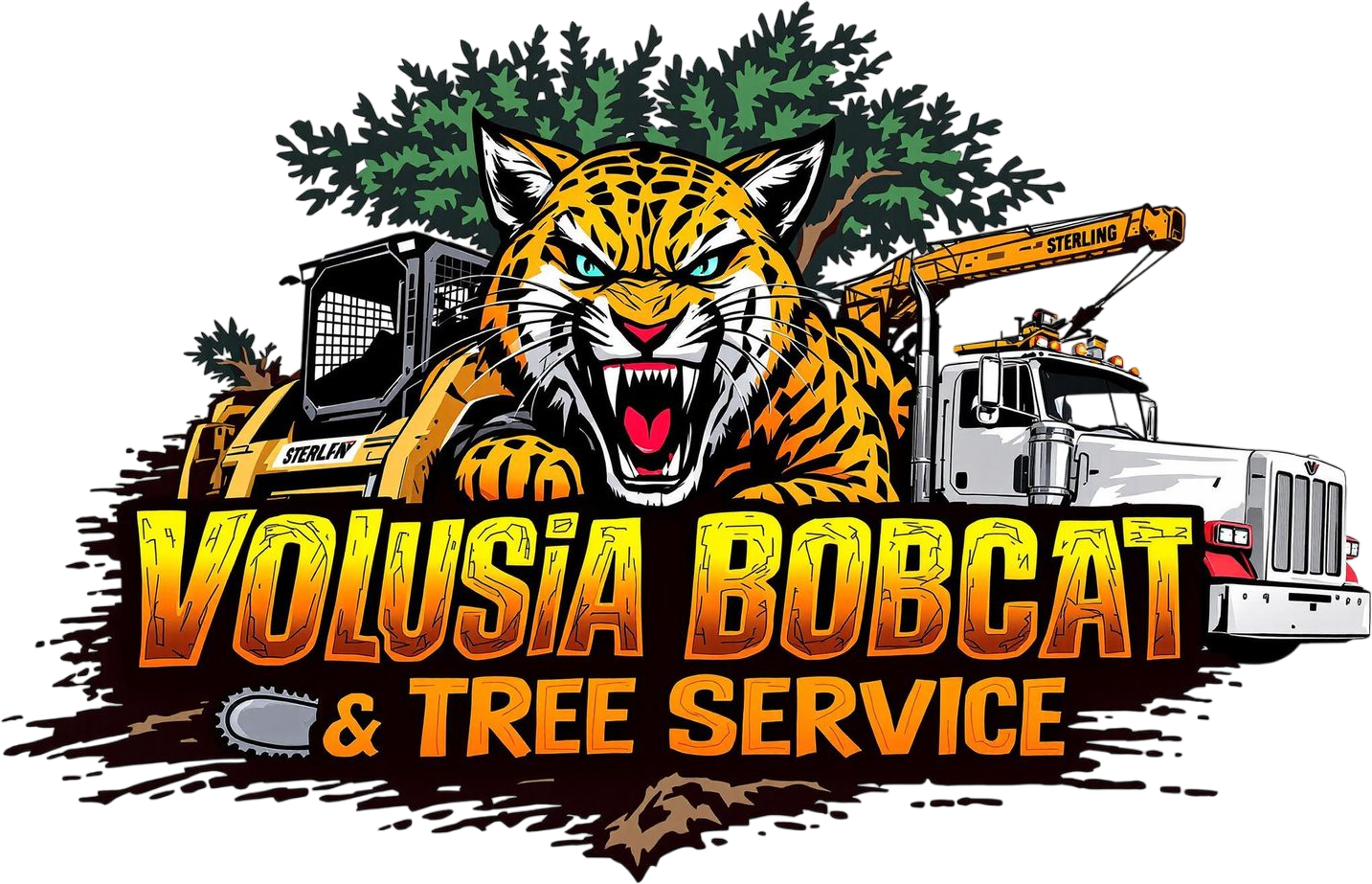Port Orange Tree Removal: Costs, Safety, and Emergency Solutions
Getting rid of a risky or overgrown tree in Port Orange can protect your property and boost its value. This guide covers typical tree removal services expenses, outlines emergency procedures, explains permit needs, details signs of tree health issues and hazards, highlights professional safety standards, explores related trimming and stump grinding options, and offers practical advice for picking a dependable local arborist. Homeowners will find actionable insights for budgeting, following rules, assessing risks, and handling post-removal care without missing any crucial steps.
What Are the Usual Costs for Tree Removal in Port Orange?
The cost of tree removal is what a professional service charges to safely cut down, dismantle, and clear away a tree. Knowing this figure is key for budgeting and avoiding unexpected charges. For instance, taking down a medium-sized oak could range from standard labor fees to specialized equipment costs, depending on how easy it is to access. Below, we’ll look at how the size, type of tree, and extra services influence your estimate.
How Do Tree Size and Type Affect Removal Costs?
The size and species of a tree dictate the amount of labor, equipment, and time needed for a safe removal.
- Small trees (up to 30 ft) usually need basic rigging and one or two climbers.
- Medium trees (30–60 ft) often require cranes or lifts, which increases the hourly rate.
- Large trees (over 60 ft) demand extensive safety setups, multiple crew members, and specialized machinery.
This assessment of size and type sets the base price before any additional services or site challenges are factored in, leading us to consider the impact of extra fees.
What Extra Charges Should Property Owners Expect?
Here’s a list of common additional charges that can increase the total cost:
- Debris hauling, which includes disposing of branches and wood at certified green-waste facilities.
- Stump grinding if the base of the tree remains, requiring specialized grinders and transport.
- Accessibility fees for tight spots, proximity to overhead wires, or steep terrain.
Thinking about these fees beforehand helps prevent surprising bills and ensures clear communication.
How Can You Get a Clear and Competitive Tree Removal Quote?
To get a straightforward and fair estimate, follow these steps:
- Request an on-site evaluation from an ISA-certified arborist who will measure the trunk’s diameter and check for site obstacles.
- Compare written quotes that detail labor, equipment, stump grinding, and waste removal fees.
- Confirm their insurance and licensing to ensure they have proper liability coverage.
- Inquire about package deals or weekday discounts that local providers might offer.
These actions build confidence in your decision and help maintain competitive pricing, naturally leading into discussions about emergency removal situations.
When Is Emergency Tree Removal Needed in Port Orange?

Emergency tree removal is for situations where immediate action is necessary to protect people, property, or utilities. When a tree’s structure fails, like splitting during strong winds, it can become a direct danger. For example, a storm-damaged palm tree leaning over a roof requires urgent professional attention.
What Are the Signs of Storm Damage or Hazardous Trees?
Homeowners should watch out for these warning signs:
- Cracks or splits running down the trunk or major branches.
- Roots that are exposed or soil that is heaving around the base of the tree.
- A sudden lean in the canopy or rapid changes in tilt after high winds.
- Branches hanging precariously (widowmakers) that can’t support their own weight.
Noticing these signs early reduces risk and prepares you for a quick removal process.
How Does 24/7 Emergency Tree Removal Service Operate?
A round-the-clock emergency plan ensures a fast response:
- You reach out to the emergency line at any time.
- A certified arborist performs a risk assessment over the phone to determine the urgency.
- A crew with chainsaws, cranes, and rigging arrives, often within hours.
- After the tree is safely removed, the debris is cleared or temporarily stacked for later disposal.
This efficient service chain quickly restores safety and limits further damage to structures or utilities.
What Safety Measures Are Taken During Emergency Tree Removal?
Professionals follow strict procedures to protect workers and property:
- Full personal protective equipment (PPE), including helmets, eye, and hearing protection.
- Use of directional felling and controlled lowering techniques to manage the tree’s descent.
- Ground spotters and flaggers to secure the work area.
- Structural bracing and choker lines when lowering heavy sections.
These protocols reduce liability and explain why attempting DIY removal during emergencies is not advised.
How to Contact Emergency Tree Removal Services in Port Orange?
Our certified arborists are available 24/7 for urgent situations. Contact us via our website treeserviceportorange.com or call our dedicated emergency number anytime. Immediate on-site assessments follow your request to restore safety without delay.
What Are the Florida Tree Removal Permits and Local Regulations?

Removing trees in Port Orange and Volusia County requires following state laws and city ordinances to protect native and historic trees. A permit ensures you’re compliant and helps you avoid fines. For example, removing a protected oak without permission can lead to penalties and mandatory replanting.
Florida Statute, Section 163.045 - Tree pruning, trimming, or removal on residential property
Florida Statute 163.045 allows residential property owners to prune, trim, or remove a tree without a local government permit if a certified arborist or licensed landscape architect provides documentation stating the tree poses an unacceptable risk to people or property. This statute also specifies that local governments cannot require replanting for trees removed under these conditions.
This legal reference directly supports the article’s points about permit exemptions for hazardous trees and the role of certified arborists in documenting risk according to Florida law, especially concerning protected species and compliance requirements.
Which Trees Are Protected Under Florida Statute 163.045?
Port Orange follows state-level protections for species including:
- Sabal palmetto (Cabbage palm)
- Quercus virginiana (Live oak)
- Serenoa repens (Saw palmetto in conservation areas)
- Any tree over 12 inches in diameter from the protected species list
These designations help preserve the local environment and cultural heritage, guiding decisions about removal and compliance.
How to Apply for a Tree Removal Permit in Port Orange and Volusia County?
| Step | Action | Why It’s Important |
|---|---|---|
| 1. Pre-application consultation | Meet with the planning department for a site review | Determines if the tree is subject to ordinance protection |
| 2. Submit certified arborist report | Provide tree species, health assessment, and photos | Validates the need for removal and helps prevent disputes |
| 3. Complete permit form and pay fee | Include property deed, plan, and fee payment | Officially records the intent to remove and covers administrative costs |
| 4. Review and approval by authorities | Inspection and final sign-off | Ensures local guidelines are met before removal begins |
Missing any step can delay projects and lead to administrative penalties.
What Role Does an ISA Certified Arborist Play in Permitting?
An ISA-certified arborist offers expert evaluation of a tree’s health, structural soundness, and environmental impact. Their report details the species, any decay or disease present, risk assessment scores, and recommended solutions. This professional documentation simplifies the permit process and shows a commitment to responsible tree care.
How to Spot Signs That a Tree Needs to Be Removed?
Knowing when a tree can’t be saved helps prevent hazards and property damage. Removal becomes necessary when health problems or structural weaknesses compromise its stability. Below, we detail the key indicators that signal it’s time for removal.
What Are Common Tree Disease Symptoms in Florida?
Diseases in our subtropical climate often show up as:
- Cankers or sunken areas on the bark.
- Yellowing leaves (chlorosis) and leaves falling off too early.
- Fungal growths (like bracket fungi) appearing on the trunk.
- Resin or sap oozing from wounds.
Catching these symptoms early helps in planning interventions, including removal if treatment isn’t effective.
How to Recognize Pest Infestations Affecting Tree Health?
Key signs of pest problems include:
- Tunnels or galleries under the bark, indicating borers.
- Sawdust-like material accumulating at the base of the trunk.
- Patterns of leaf loss specific to caterpillar or beetle activity.
- Small spots and yellowing on leaves caused by scale insects.
Pest-related decline can speed up structural failure, making removal the safest option.
What Structural Weaknesses Indicate Tree Removal?
Structural warning signs include:
- Two main stems growing from the same point with included bark, creating a risk of splitting.
- Excessive leaning that goes beyond the root system’s ability to support it.
- Root rot leading to poor anchoring and soil heaving.
- Hollow or decayed core wood, reducing its load-bearing capacity.
Identifying these weaknesses guides removal before a catastrophic collapse occurs.
When Is a Tree Considered Dead or Dying?
A tree needs removal when it can no longer sustain its vital functions and shows no signs of recovery, indicated by:
- Complete leaf loss that lasts beyond a full growing season.
- Brittle, dry branches that snap easily when bent.
- No green layer (cambium) under the bark when gently scraped.
- Ongoing decay that weakens the roots or trunk.
At this point, removal protects the surroundings and prevents the spread of pests to nearby trees.
Optimizing Tree Removal Services in Port Orange, FL
Professional tree removal improves your property’s appearance, reduces legal risks, and maintains long-term landscape health. By choosing expert services, homeowners gain benefits like better aesthetics, increased safety, and compliance with regulations.
How Does Tree Removal Enhance Property Value in Port Orange?
Removing diseased or overgrown trees boosts curb appeal, opens up views, and lowers maintenance responsibilities. Healthy trees can increase property values by 7–19 percent compared to similar homes, and safe landscapes attract more buyers. Strategic removals can frame desirable views and make space for new construction or landscaping projects.
How Tree Removal Can Increase the Value of Your Property
Thoughtful tree removal can boost property value by reducing risks from hazardous or poorly positioned trees, improving natural light and views, and creating space for landscape enhancements. Removing unhealthy or problematic trees can make a property more attractive to potential buyers and decrease future maintenance costs.
This insight supports the article’s point that removing certain trees can positively affect property value by improving looks, safety, and the overall usability of the land.
Why Is Professional Tree Removal Safer Than DIY Methods?
Professional arborists use advanced safety procedures and specialized tools:
- Certified rigging techniques allow precise control over falling limbs.
- Hydraulic lifts and cranes provide safe access to high or unstable trees.
- Team coordination minimizes risks for ground crews.
- Liability insurance and permits cover unexpected incidents.
These measures protect people, buildings, and neighbors, which DIY efforts cannot guarantee.
What Are the Environmental Impacts of Responsible Tree Removal?
| Impact Type | Outcome | Mitigation |
|---|---|---|
| Positive | Removes hazards and disease carriers | Habitat replacement through replanting initiatives |
| Negative | Reduces tree canopy and shade | Selective removal and immediate replanting with native species |
| Positive | Prevents structural failures after storms | Keeping healthy trees and enhancing biodiversity |
| Negative | Potential for soil erosion | Implementing erosion control and mulching around root zones |
Responsible removal balances ecosystem health with human safety, paving the way for new plantings and sustainable landscapes.
How Does Stump Grinding Improve Property Aesthetics Post-Removal?
Stump grinding removes trip hazards and unsightly tree bases, creating a level surface for new grass or garden beds.
- It also discourages pests like termites and ants from nesting in old wood.
- The wood chips produced can be used as mulch, enriching the soil and retaining moisture.
This service completes the removal project by restoring both the look and function of the property.
What Tree Trimming and Stump Grinding Services Complement Tree Removal in Port Orange?
Combining tree trimming and stump grinding with removal helps maintain long-term tree health and keeps the site tidy. Preventative trimming reduces the need for future removals, while stump grinding clears away leftover wood.
How Does Tree Trimming Support Tree Health and Safety?
Regular pruning removes dead branches, shapes mature crowns for better wind resistance, and allows more light to reach through the canopy.
- Thinning the crown reduces wind resistance and the risk of limb breakage.
- Removing branches that rub against each other prevents bark damage.
- Strategic cuts encourage balanced growth and reduce weight on major limbs.
Proper trimming extends a tree’s lifespan and often prevents the need for removal.
When Is Stump Grinding Necessary After Tree Removal?
Stump grinding is needed when:
- New landscaping or construction is planned for the area where the tree stood.
- Stumps present tripping hazards or attract organisms that feed on decay.
- Homeowners want a smooth lawn or patio area.
Grinding the stump down to 4–6 inches below the surface allows for adding topsoil and replanting grass with minimal disruption.
What Equipment Is Used for Stump Grinding and Tree Trimming?
| Equipment | Purpose | Benefit |
|---|---|---|
| Stump Grinder | Turns stumps into wood chips | Clears the site efficiently for replanting or building |
| Bucket Truck or Lift | Safely raises an arborist into the tree canopy | Allows for precise trimming and limb removal |
| Chainsaw with Carving Bar | Removes limbs and trunk sections | Facilitates controlled cuts and reduces waste |
How to Choose a Reliable Tree Removal Service in Port Orange?
Selecting a trustworthy provider ensures safety, compliance, and good value. Evaluate their credentials, services, and communication style to make a well-informed choice.
Why Hire ISA Certified Arborists for Tree Removal?
ISA-certified arborists have undergone extensive training in tree biology, risk assessment, and ethical management practices.
- Their certifications confirm they follow industry standards.
- They continuously update their knowledge on new tree care techniques.
- Certified experts provide reliable inspection reports needed for permit applications.
8 Benefits of Hiring ISA Certified Arborists
ISA Certified Arborists possess deep knowledge of tree biology, diagnosis, maintenance, and safety protocols, enabling them to offer professional assessments and recommend suitable treatments. Their certification indicates adherence to industry standards and a dedication to ongoing learning, ensuring safe and effective tree care.
This information reinforces the article’s focus on the expertise, safety, and professional standards that ISA-certified arborists bring to tree removal and care, highlighting their role in accurate assessments and adherence to best practices.
What Should Property Owners Look for in Local Tree Service Providers?
Choose a company that shows:
- Valid licenses and complete insurance coverage.
- Clear, itemized quotes detailing all costs.
- Positive feedback from local residents.
- A willingness to discuss tree health advice beyond just removal.
This combination of local reputation and professional integrity provides peace of mind.
How Do Transparent Pricing and 24/7 Availability Affect Service Quality?
Transparent pricing builds trust by clearly breaking down costs for labor, equipment, and waste removal. 24/7 availability ensures urgent needs are met without costly delays. Together, these factors:
- Reduce unexpected charges and scheduling issues.
- Strengthen customer confidence in prompt, dependable service.
- Demonstrate a provider’s commitment to safety and responsiveness.
A provider that excels in these areas stands out in Port Orange’s competitive tree-care market.
Removing hazardous or unwanted trees doesn’t have to be overwhelming. By understanding costs, regulations, emergency procedures, and professional standards, property owners can protect both their landscape and their investment. Partnering with local ISA-certified experts ensures compliance with Florida laws, safe removal practices, and site restoration after removal for lasting peace of mind.
